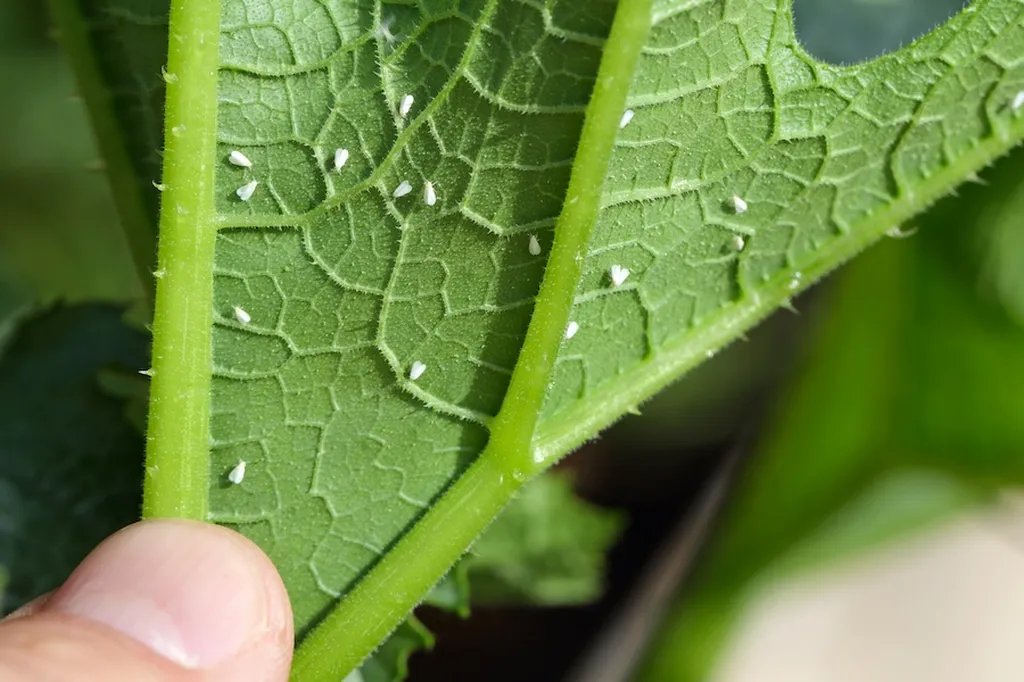In the ongoing battle against agricultural pests, a team of researchers led by Patrick Thomas from the Department of Botany and Plant Sciences at the University of California has uncovered new insights into how alfalfa (Medicago sativa L.) can be a powerful ally in controlling whiteflies, a significant threat to global agriculture. Their study, published in the journal Scientific Reports (known in English as Nature Scientific Reports), reveals that different alfalfa populations exhibit unique resistance mechanisms against various species of the Bemisia tabaci complex, commonly known as whiteflies.
Whiteflies are notorious for their ability to transmit plant viruses and cause significant crop damage, making them a formidable challenge for farmers worldwide. Traditional pest control methods often rely on chemical pesticides, which can have environmental and health drawbacks. Host-plant resistance offers a more sustainable and effective strategy, but it has been relatively unexplored until now.
Thomas and his team developed three alfalfa populations and subjected them to high-throughput screens to assess their resistance to the MEAM1 species of whitefly. Their findings indicated that resistance to MEAM1 is multigenic, meaning multiple genes contribute to the plant’s defensive capabilities. They identified several alfalfa lines—R1, R2, and R3—that were highly resistant to MEAM1, as well as a susceptible line, S1, for comparison.
The researchers then evaluated the life history parameters of three whitefly species—MEAM1, MED, and NW1—on these alfalfa lines. The results were intriguing. While nymph mortality was high for MEAM1 and NW1 on the resistant alfalfa lines, the MED species surprisingly showed unimpaired nymph development. This species-specific response suggests that the resistant alfalfa lines express a unique set of antibiotic and antixenotic (deterrent) resistance traits.
“Our data indicate that each resistant alfalfa line has a distinct combination of resistance mechanisms,” Thomas explained. “This multigenic and multi-faceted resistance provides a robust defense against whiteflies, with each species displaying different behaviors on the resistant lines.”
The study also revealed significant differences in oviposition (egg-laying), host-choice, and longevity among the three whitefly species. These findings highlight the complex interactions between plants and pests and the potential for developing tailored resistance strategies.
One of the most compelling aspects of the research is its potential commercial impact. The nymph-mortality simulation models developed by the team suggest that deploying the resistance traits of R1 and R3 alfalfa could substantially suppress whitefly population expansion in the field. This could lead to reduced reliance on chemical pesticides, lower production costs, and more sustainable agricultural practices.
“By understanding and leveraging these resistance mechanisms, we can develop alfalfa varieties that are not only more resilient but also more productive,” Thomas added. “This has significant implications for the agricultural sector, particularly in regions where whiteflies pose a major threat.”
The research opens up new avenues for developing crop varieties with enhanced resistance to pests. By integrating these findings into breeding programs, farmers could benefit from crops that are naturally more resistant to whiteflies, reducing the need for chemical interventions and promoting more sustainable farming practices.
As the global agricultural sector faces increasing pressures from climate change and pest outbreaks, innovative solutions like these are crucial. The work of Thomas and his team not only advances our understanding of plant-pest interactions but also paves the way for more resilient and productive agricultural systems.

